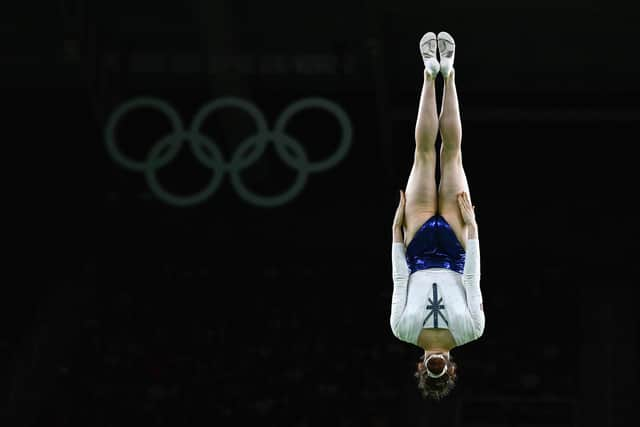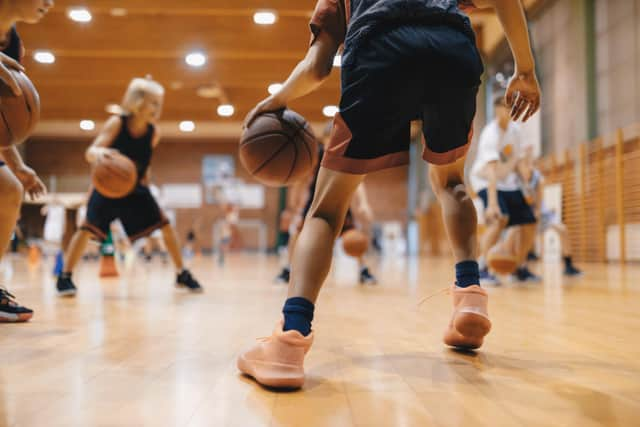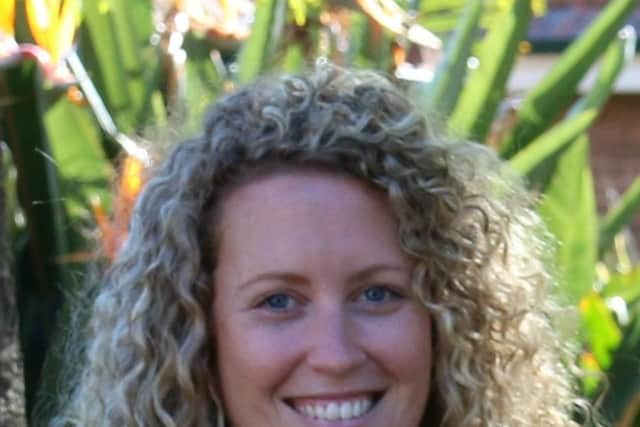How do the world's best-ranked countries make sport part of daily life?
Yet how countries tackle sport at a grassroots level – from introducing young children to different activities, to supporting athletes financially at the elite level – can make a huge difference to international performance.
Here, we take a look at the world’s leading sports countries and how they approach physical activity.
Advertisement
Hide AdAdvertisement
Hide AdAccording to a report from sports website MyProtein – which measured Olympic performance, elite sport and general sports participation – the world’s “sportiest country” is Australia, followed by the United States. The United Kingdom comes in third place, with Japan and France in fourth and fifth respectively.


However, while the US is ranked first in Olympic and elite performance, it is just 24th in terms of general participation in sport at a national level, with just 51.5 per cent of people regularly taking part in physical activity. The UK has a slightly better participation rate, at 54.1 per cent, but its high performance in Olympic and elite sports claimed it a top five spot.
The report found that Australians are very physically active, with sports and active recreation participation rates exceeding 75 per cent – the highest of the top five countries.
Paul Greaves, a lecturer in Sport at Stirling University, pointed to the fact that most countries which achieve consistent high level success in sport are those with money to fund facilities and athlete training.
“The countries on this list are not a surprise,” he said. “We switch around a lot of policies with Australia: they were at one point going for a focus on elite sporting performance, while we might focus more on participation, grassroots, getting people active and involved in sport – and then it flips.


“I think with that constant change, the continual cycle of looking at focusing on different areas of sport, that’s why we’ve got this continual success on all aspects of sport.”
He said that countries which do not allow children opportunities to try out a wide range of sports are not likely to do well at an elite level.
“I think the opportunities that people have to do sports is one of the keys to success on all levels – and a lot of that comes down to facilities,” he said.
Advertisement
Hide AdAdvertisement
Hide Ad“All of these countries are well-off countries and have the money to put into facilities. This is especially true in the US – I visited a high school there and they have a full basketball court with bleachers – and these kinds of facilities are replicated in schools across America. I have also spent some time at the Japanese Institute for Sport and it was just incredible. The opportunities allow participation and that produces elite athletes.”


Mr Greaves, who is also an elite trampoline coach and helped coach gymnast Bryony Page, who achieved a silver medal at the Rio Olympics in 2016, pointed to a comment made by Olympic table tennis player Matthew Syed.
“He said that his playing table tennis at all came down to the fact there was a club near him and one particular coach there,” said Mr Greaves. “If that coach and that club hadn’t been there, he would never have known that he was good at table tennis and would never have become elite in the sport, so it all comes down to opportunities.”
Raleigh Gowrie, a lecturer in the School of Health and Life Sciences at the University of the West of Scotland, agreed.
He said: “Determining success in elite sport has as much to do with what’s going on below elite sport as what’s being delivered at the highest level now.


“There are at least four key factors [to success]: population size, the country’s wealth, the economic conditions within that country and the level of the investment that is directed to sport provision.
“It’s the interplay of these four key factors, as well as the cultural significance of sport in the daily lives of the members of society that really determine how effective and efficient the sports systems are in place.”
He added: “For the most part, these countries operate a mixed economy model of provision, with public sector investment, private sector investment and also voluntary sector investment.”
Advertisement
Hide AdAdvertisement
Hide AdMr Gowrie referenced early sports systems created in East Germany and Australia in the 1970s and 1980s where children were identified at school level as potential elite athletes, which he says have been built on and replicated in many countries worldwide.
He said: “The UK, France and Australia have fairly small populations in terms of a sports super power, but their sports systems are relatively mature. The system is a combination of political commitment and investment given to sport, the subsequent delivery of infrastructure and practice, and how they allow people to engage in sport and physical activity.”
Australia


Known as a sporting nation, Australia has high levels of participation in sport among children, but also in adults – with outdoor activities such as walking, cycling and surfing commonplace.
It also has a strong following of national and local sports teams, with homegrown sport, Australian rules football, one of the most popular.
Elite athletes are funded by the Australian Government, which, through Sport Australia and the Australian Institute of Sport, provides annual high-performance funding to national sporting organisations.
A national sport strategy published in 2019 aims to make Australians even more active and achieve sporting excellence.
◆ Clare Crewdson is head of operations at Cricket New South Wales after a career playing and coaching cricket at an elite level. She lives in Sydney with her husband and eight-month-old daughter.
“Everybody plays sport in Australia. The climate year round means that everybody wants to be outside and the best way to spend your time outside can often be playing sport. Growing up, everybody I knew played a sport, multiple sports per week, every week, every weekend, because we just wanted to be outside. It’s just a way of life here really.
Advertisement
Hide AdAdvertisement
Hide Ad“There’s a lot of government support. You can get Active Kids vouchers – two lots of $100 a year – to register your kid in whatever sport you want. So that helps get parents thinking about it and gets kids out there playing to start with, and then once they’re hooked, obviously they’re going to keep going.
“If you’ve been identified as a high performance athlete, you’ll be pushed through the system pretty easily and you’ll get the support you need. Once you become elite, the government will put in millions and millions of dollars to high performance facilities to make sure that they’re up to scratch, and then the sporting body itself will then cover most of the other costs.
“We have a big brunch culture, as opposed to a late night culture and that’s because we want to be outdoors in the sun, and then that leads on to all of this leisure activity that is around the beach, around gyms, around cycling, all that type of stuff. So we are a very active country all the way through life.”
United States
Sport is regarded as important for young people in the US, with many promising athletes offered scholarships at American universities based on their sporting success. Facilities are generally considered to be among the best in the world, with sports stadiums and pitches available at most schools.
The YMCA, an international organisation with a network across the US, is popular as an affordable way for children to begin sports such as basketball. The organisation also sponsors youth sports teams for swimming, cheerleading, basketball and association football. A recent report, ‘Who Plays, Who Pays’, by the Rand Foundation, found that although the majority of US public high schools – more than three quarters – offer sports, schools serving a high percentage of students in poverty are more likely not to offer sports than those in more affluent areas.
Local governments have the power to ensure that community resources, such as parks and sports fields, be shared across community organisations and open to schools that lack their own facilities.
In the US, unlike most governments, national Olympic level teams are funded privately through individual sporting bodies. The Olympic committee’s main sources of revenue are television broadcast rights, sponsorships and philanthropy in the form of major gifts and direct mail income.
◆ Danielle Barnett-Herzog is a school counsellor. She lives in Nebraska with her husband and two children, aged 14 and 11.
Advertisement
Hide AdAdvertisement
Hide Ad“Sports in the US are highly encouraged, but not easily obtainable. Overall, we’re not a very active country. People are in front of their TVs watching sport and are in the stands watching it, but I wouldn’t say that people themselves are active.
“We have opportunities for sports at the [youth organisation] YMCA level, which is financially achievable and offers opportunities for students of all economic levels. But there’s only so far you can go at those levels: they’re usually volunteer run and are exposing the kids to the sport. To participate in any role that is going to warrant a college scholarship or get in front of the eyes of scouts, a students has to go into club sports – and that is where an inequity occurs because club sports are incredibly expensive. You have to be at a higher economic level.
“Sports are great for kids mentally. They teach you failure, which is an important lesson to learn for kids, how to overcome failure, how to have that kind of grit. But there’s also a harshness that comes with it because if they don’t even get the opportunity to experience it, there’s already an inequity. Taking part in club sports can cost parents $3,000 or $4,000 a year. There’s coaching, but then to compete there is travel and hotel bills and fees for coaches to attend the competition, which is split between parents. It’s something that has become only affordable for the middle and upper classes.
“Even within school sports, there is always this hierarchy of competition in the US. You have state champions, but first you have district champions, then you have state champions, and there’s always this one level up to get to. And this is possibly one reason for elite success.
“When that is thrown at you over and over again and it becomes your main focus, then you are going to show success. Kids get used to the feeling of being the best of the best. I think the culture is fostering that, which could lead to success.”
United Kingdom
UK Sport investment is made through four-year awards. The funding contributes to the costs and services needed to support high-performance athletes to achieve success in the Olympic or Paralympic Games and at other major competitions. It also assists with the long-term aim of growing a more “accessible and sustainable” system of support that enables more high potential athletes to emerge and ensures the most promising athletes can attend major competitions and Olympic qualification events.
An Athlete Performance Award, which is solely funded by National Lottery income, is paid directly to the athletes and contributes to their living and sporting costs.
Ahead of the 2020 Olympics in Tokyo, more than 50 per cent of UK Sport’s funding was invested in just five sports – rowing, athletics, cycling, sailing and aquatics – in a bid to concentrate on areas in which the UK had a chance of winning medals.
Advertisement
Hide AdAdvertisement
Hide Ad◆ Colin Hutchison is chief executive of Scottish Athletics in Edinburgh.
“There are various sources of funding for high-level athletes in Scotland and the UK. There are institutes of sport who will provide services for athletes, for example, the top 50 athletes in Scotland, who will have access to things like physical therapy, injury prevention and nutrition advice.
“When young athletes get on to UK programmes, they’re still not well funded and will probably still have quite a personal contribution until they can get to a point where they might be offered a sponsorship from a shoe or kit manufacturer.
“Quite often, you still have athletes on those UK programmes who work. For young athletes who are still in the education system, at university or school, the funding allows them to travel abroad for competitions or training, but for those beyond that, that is where the challenge comes in of sustaining a living while being a competitive athlete.
“Sport in the UK is still very reliant on volunteers for things like coaching and refereeing. It is interesting that is still sustained on that model, although it has become more professionalised in some areas.
“In Scotland, about 15 or 16 years ago, we launched the Active Schools programme, which was established not just to create extra-curricular activities within schools, but to increase community sport and make more of a connection to local clubs. Within the school system, there is a lot of exposure to sport. We probably need to get even better around the quality of what is delivered in each sport. Physical activity has expanded beyond the obvious sports.
“Where Scotland has focused in the last few years is if the sports sector does enough to widen access to the sport, and that has been an interesting one for all sports to look at.
“There is more focus on the benefits of health and physical activity, and people are becoming more aware of it being good for mental health and well-being. Within the running community, we’ve definitely seen that. A programme like Jog Scotland and a walking programme, Paths for All, has played a massive part – it’s taken away the fear and trepidation about going along to a sports club and what that means.”
Japan
Advertisement
Hide AdAdvertisement
Hide AdJapan has a strong national focus on being active. Parks and outdoor spaces often hold classes in activities such as tai chi for all ages, including the elderly. Meanwhile, Radio Taiso broadcasts calisthenics – stretching and movement exercises – to music, something which is used in many schools, as well as companies and offices, where everyone is encouraged to take a break from their desks to move their bodies for a few minutes.
The Japan Sports Agency uses proceeds from the Sports Promotion Lottery (known as “toto”) and the operating profit of the Sports Promotion Fund to provide subsidies to sports organisations and local government bodies. According to Statista, the annual sports budget planned for the fiscal year 2022 by the Ministry of Education, Culture, Sports, Science, and Technology and the Japan Sports Agency amounted to approximately 35.48bn Japanese yen (£225m) – its highest-ever level.
Baseball and sumo wrestling are among the most popular sports to watch in Japan.
France
France devotes the most money to sport of any country in the EU, with both public funding, a growing share of private spending and specific funding for major sporting events such as the Paris 2024 Olympic Games.
In 2019, the French government announced a major increase in sports funding, from launching a network of “Maisons Sport-Santé” (Healthy Sport Houses), which aim to help people become active, to investing substantial sums in swimming lessons to curb a rise in deaths relating to drowning, as well as improving national and regional sporting infrastructure and events.
It also launched a new high-performance plan called Ambition Bleue, or “Blue Ambition”, ahead of the Olympics next year.
Under the scheme, around 400 French athletes are expected to join a “High Performance Circle”, and to benefit from enhanced levels of support. It is hoped performance levels can advance to the point where France can secure a top-five spot in the medals table.
◆ Nicolas Salicis is a former elite figure skater from France. He now lives in Edinburgh with his wife and two children, and was previously a coach and manager at Murrayfield Ice Rink. He now works in financial services.
Advertisement
Hide AdAdvertisement
Hide Ad“My parents were proactive to make us do activities, but they were easily available. I grew up in the Alps, so the main activities were either skating or skiing.
“Each year with school we would do a six-week cycle of ice skating, Nordic skiing and Alpine skiing – because it was there.
“In the 1970s, France put laws in place that said if they had a village or town of a certain number of people, there needs to be certain things: an ice rink, a swimming pool, that kind of thing. A lot of infrastructure was built at that point and was run by the council.
“To have an hour’s skating lesson through the year was the equivalent of perhaps £150. The skating club didn’t pay for the ice, as it was council owned and it was given free by the city, so we just had to pay for the coaches.
“Therefore, the grassroots in France tends to be a lot wider than here in the UK for some sports, because of the infrastructure being run by the state. The pressure on parents’ wallets for children doing activities is not as much, so French parents don’t have to think about their children wanting to take part in sport.
“Here, I’ve got two children and the cost goes up very quickly, you have to make choices. My older son dives, which is £80 a month, my younger son does tennis for £16 a month, swimming is another £21 a month. You need to think about your budget instead of being able to say to your children: ‘it’s there, go for it, give it a try’.
“A number of high-profile figure skaters in France began skating through school – local coaches see they have potential and take it from there.
“It’s not the people who have the money who are necessarily going to be the best sportsmen, and I think France has been good at that to try to open the door to as many people as possible.
“In the UK, you need to have income to have lessons.”
Comments
Want to join the conversation? Please or to comment on this article.